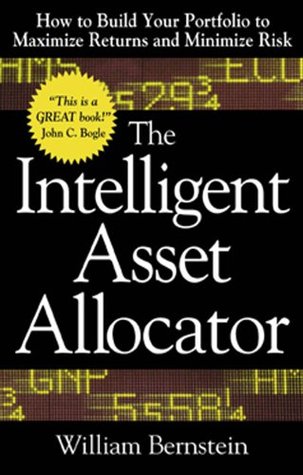More on this book
Kindle Notes & Highlights
Read between
December 19 - December 31, 2018
By now I hope that I’ve convinced you that market movements are essentially a “random walk”—unpredictable in every regard, making stock selection and market timing an impossibility.
yesterday’s, last month’s, or last year’s market return conveys no information about future returns.
the simplest is to look for “autocorrelations” in price changes.
a zero autocorrelation defines a random walk.
This in turn means that the odds of this occurring with 873 random numbers is less than 1 in 100.
That doesn’t buy a lot of yachts. For the taxable investor, this stuff is totally irrelevant—whatever advantage there is to this technique is obliterated by the capital gains capture from buying and selling with the high frequency necessitated by momentum techniques.
For the tax-sheltered asset allocator, the message is loud and clear: Do not rebalance too frequently.
In practical terms, this means rebalancing no more than once per year.
momentum investing and fixed-asset allocation with contrarian rebalancing are simply two sides of the same coin.
Unfortunately, in a truly random-walk world, there is no advantage to portfolio rebalancing.
In the real world, fortunately, there are subtle departures in random-walk behavior that the asset allocator-investor can exploit.
change in asset desirability,
the resultant short-term momentum and long-term mean reversion, the...
This highlight has been truncated due to consecutive passage length restrictions.
Stocks outperform almost all other assets in the long run because you are buying a piece of our almost constantly growing economy.
A key investment concept is that of “valuation,” i.e., how to tell when an individual stock or stock market is expensive or cheap.
price/earnings (P/E) ratio, price/book (P/B) ratio, and dividend yield.
P/E describes how much you are paying for those earnings.
corporate earnings provide useful information only when averaged over several years.
All companies have a book value;
stock with a P/B of less than 1 is said to be cheap; one with a P/B of more than 5 is said to be expensive,
it is simply the amount of dividend remitted to the shareholders divided by the price of the stock.
We see that this number usually varies between about 7 and 20 and averages about 14;
it has varied between 2.5% (expensive) and 7% (cheap); it averages about 4.5%.
Valuation of foreign stocks is highly problematic because of the differences in accounting standards among nations; nonetheless, the ranges of P/B of most of the EAFE nations seem similar to that of the United States.
long-term returns are usually higher when valuations are cheap
There is a very large volume of data that answers this question resoundingly in the affirmative.
The largest movements in a company’s price usually occur when its earnings either greatly exceed or fall short of analysts’ expectations.
What really matters is whether they are higher or lower than the “Street” anticipates;
“value” stocks tend to fall much less in price than “growth” stocks when earnings disappoint.
“value” stocks tend to rise more in price than “growth” stocks when earnings exceed expectations.
Good companies are generally bad stocks, and bad companies are generally good stocks.
Cheap companies are dogs, and most people cannot bring themselves to buy them.
Looking for cheap stocks is called value investing. The opposite of this is growth investing,
Efficient-market theorists are fond of pointing out that there is no pattern to stock or market prices. (As we have already seen, this is not strictly true.)
earnings growth also exhibits random-walk behavior;
If you are to come out ahead with growth stocks in the long term, their earnings will obviously have to grow over three times larger than the value stocks.
While the growth stocks, as expected, experienced higher earnings growth, this advantage decayed over time, and their dollar earnings never surpassed those of the value group.
superiority of low P/B and low P/E stocks.
sales growth affected future returns; the most rapidly growing companies had the lowest returns.
low P/B and P/E stocks outperform g...
This highlight has been truncated due to consecutive passage length restrictions.
These three risk premiums—market, size, and value—have been researched extensively by Fama and French. They, and others, have shown the existence of all three in the U.S. market over a very long time period, as well as in many other countries.
Ultimately, the rewards of the capital marketplace go to those who can most intelligently balance the three risk factors, as well as the risks of their employment.
there is no getting around the fact that in the long run equity returns are closely approximated by the sum of the dividend rate, now 1.3%, and the earnings growth rate, historically about 5%.
Over the long term value beats growth, and small value may very well beat everything else.
discounted dividend model (DDM),
One small wobble in the post and several thousand pounds will lurch in an unexpected direction.
So what determines the appropriate DR? It is very simply two things: the cost of money (or the risk-free rate) plus an additional amount to compensate for risk.
the GH-Dow controversy depends on whether you think that investors experience risk as a short-term or a long-term phenomenon.
the risk horizon of the average investor was just one year.


